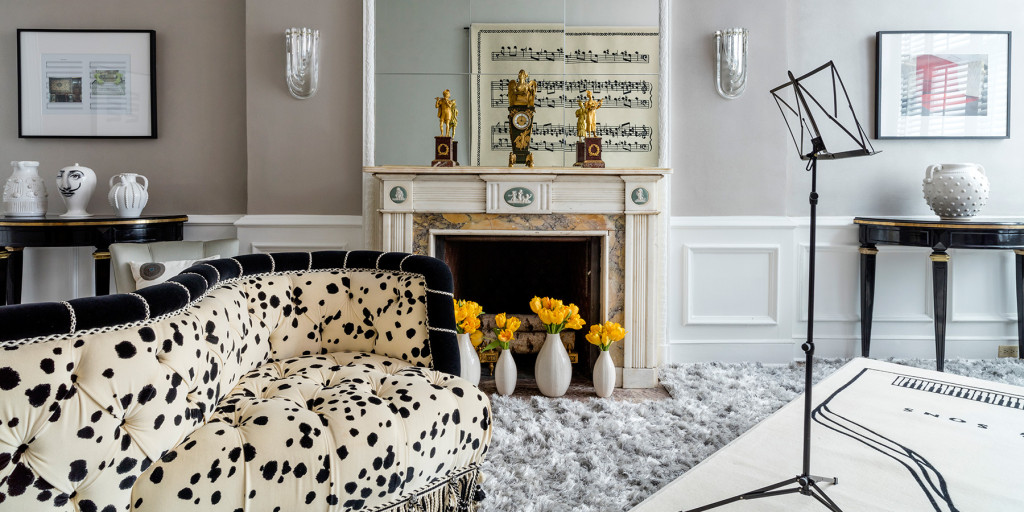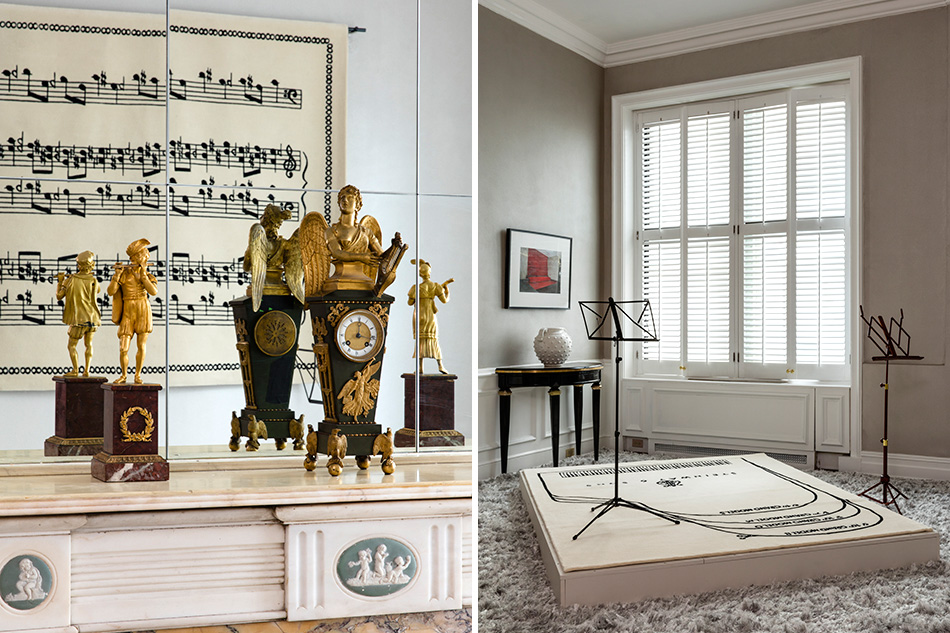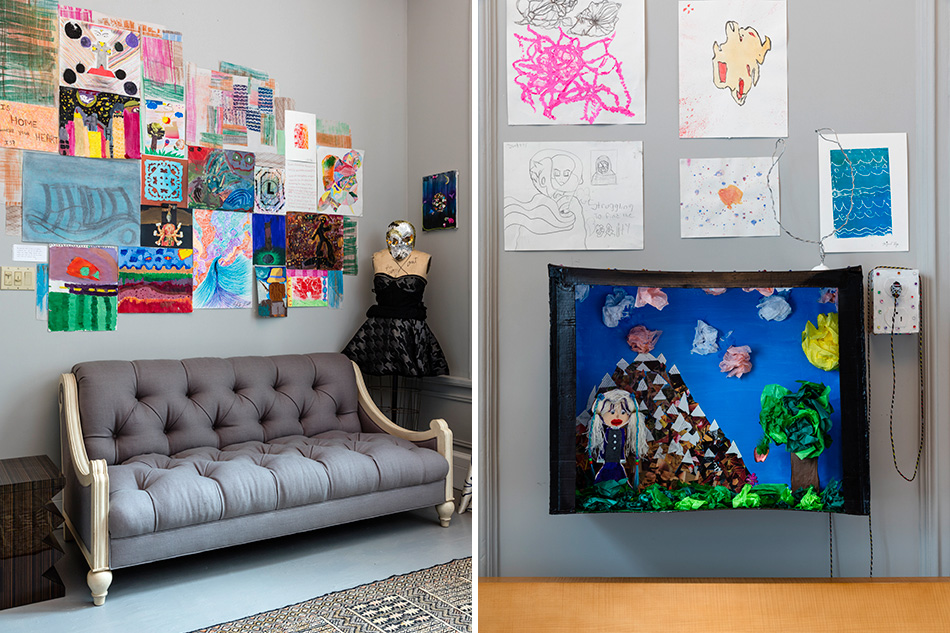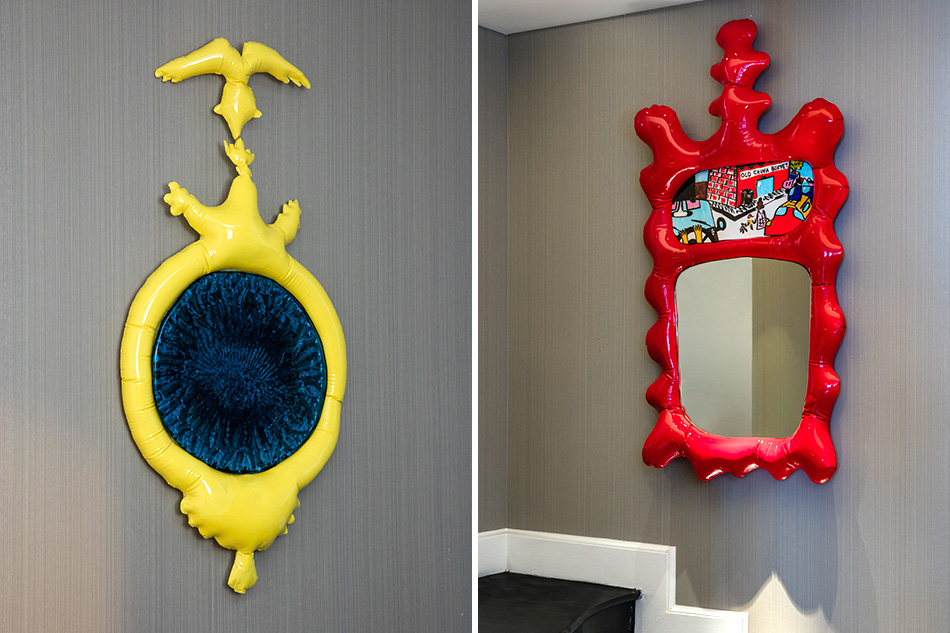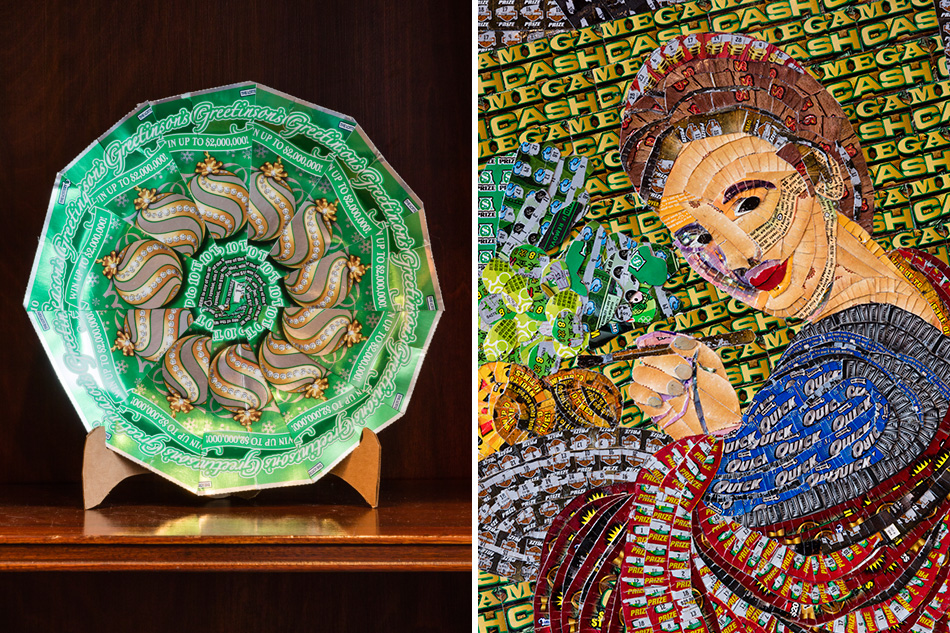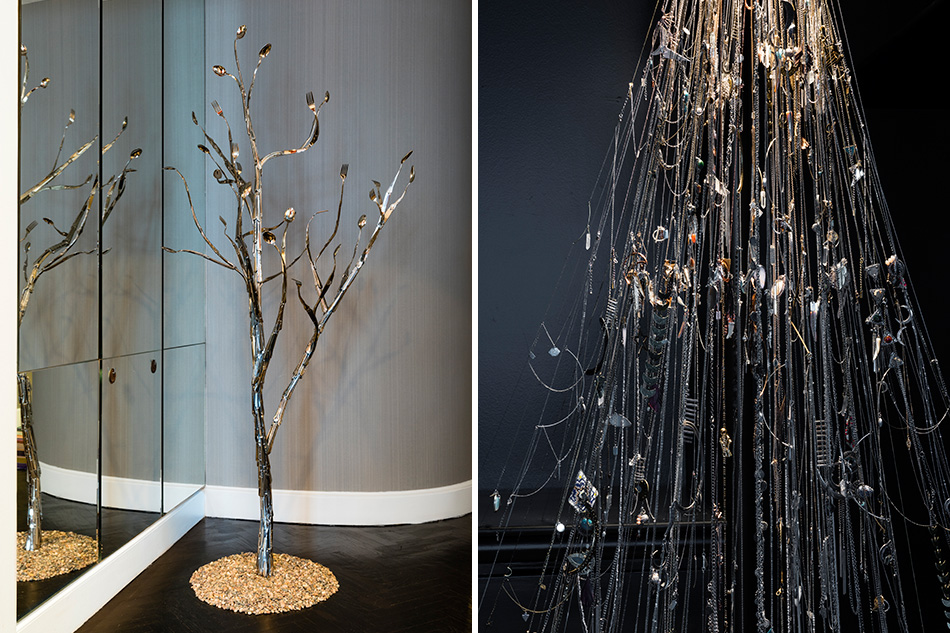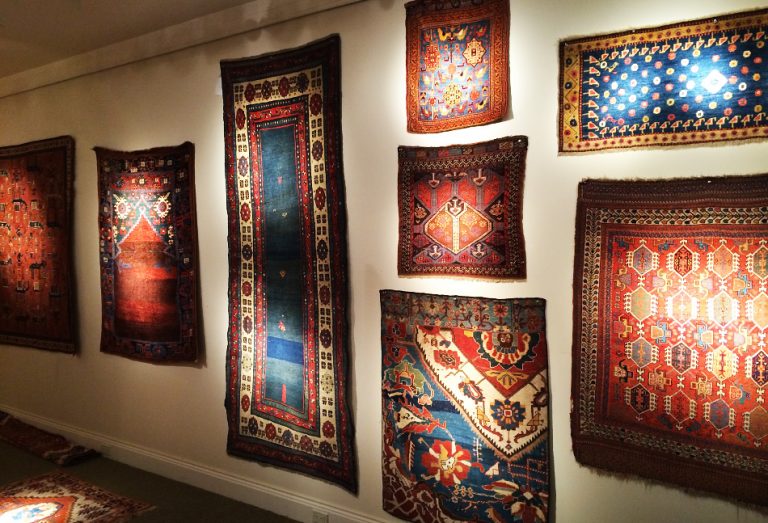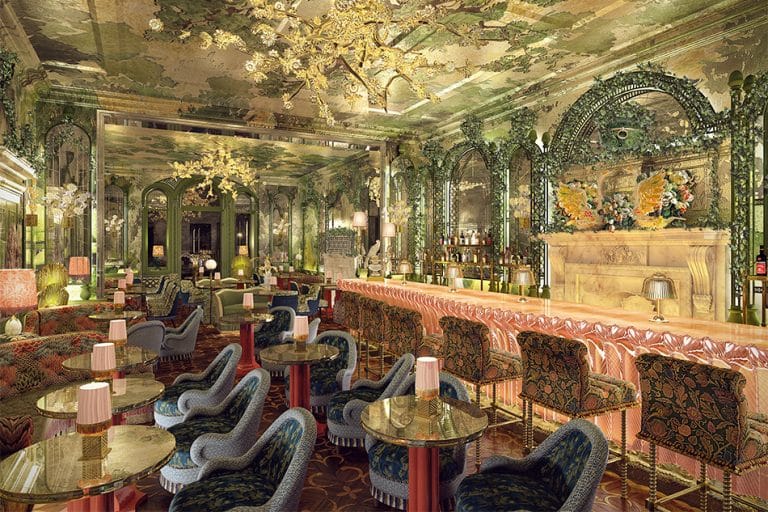
April 11, 2016The pop-up exhibition “Be My Guest: The Art of Interiors” (open by appointment from April 18) will install diverse works, including photographs by Mickalene Thomas, in a sumptuous Manhattan apartment. Top: The music room includes two wool rugs, one printed with an Erik Satie score, 2004, and another bearing the outline of various Steinway pianos, 2010, both by Barbara Bloom. All photos by Antoine Bootz
For a certain subset of the public — those who read the New York Times real-estate section first on Sundays and who go to weekend open houses as if they were free museum tours — the chance to wander through an otherwise off-limits apartment on New York’s Upper East Side would be welcome indeed.
But they would be surprised as well as enchanted by the offerings that await visitors to “Be My Guest: The Art of Interiors,” held in just such a property. Going on view April 18, the by-appointment art show — staged by the nonprofit group No Longer Empty and the quarterly magazine Galerie — engages viewers with an especially rich and complicated take on the idea of home. Galerie’s founder and editorial director, Lisa Cohen (whose husband, James Cohen, is president and CEO of Hudson Media), conceived the showcase and turned up a venue that fits the arts organization’s commitment to activating unused spaces — in this case, a vacant townhouse apartment belonging to her family.
Each of the artists featured — among them museum-favorite Mickalene Thomas, represented by Lehmann Maupin; the installation wunderkind Misha Kahn, a recent addition to the Friedman Benda stable; and Ena Swansea, an Albertz Benda artist — has a very different take on domestic life.
“[Home] is enormous as a theme,” says Manon Slome, the chief curator of No Longer Empty, which has staged 22 such site-specific exhibitions in its seven-year history as part of its goal to encourage public engagement with contemporary art. “We found a very fertile subject. It’s not just comfort and belonging. Home can be dark, too.”
Some of the artists made works especially for the show, but its organizers picked all of the pieces to have special meaning within certain spaces. “The art in every room responds to the nature of the room originally,” says art advisor Michael Steinberg, who co-curated the show with Slome.
Some of the artworks are for sale, either directly from the artists or through the galleries that represent them. That includes the pieces in one bedroom that were created by LGBTQ youth served by the New York City nonprofit Hetrick-Martin Institute, which will receive the sales proceeds. “Many of these kids have been thrown out of their homes, and that makes the theme extra poignant,” says Slome.

The dining room’s marquetry-inspired panels are actually a 2009 artwork made of discarded lottery tickets collected and repurposed by artist duo Ghost of a Dream (Adam Eckstrom and Lauren Was).
As far as the professional artists go, Kahn confounds expectations about the domestic theme right away with his two “mirrors,” which hang on either side of the entrance foyer. Imitating the lines of classic antiques, they are made with Kahn’s signature look, using concrete casts of rubber balloons. One of them doesn’t even hold a looking glass.
Kahn calls them “accidental cartoons of home objects, lightly referencing an antique with little care or accuracy” and “plastic objects that exist between hope and disappointment” — an interstitial space that may remind people of the mixed emotions that a visit home can bring.
To the left as you enter, the living room of the apartment features four of Thomas’s works. Among them are three depictions of her mother, Sandra Bush, including the collage Left Behind Again 2 (2014), all part of a long-running series. She is shown very much posing for the portraits, in a mythical living space created in Thomas’s studio, and the theme of presenting ourselves to others particularly resonates in a home’s most company-oriented area. “I’m interested in types of spaces that provide a certain level of intimacy,” Thomas says of the works’ settings. “What kind of places offer room for political, thoughtful, engaging conversations.”
In the same room, Swansea has installed one of her ingenious reversible sofas. One side of the 2014 work, titled Party People Sofa, is covered in white fur, and the other is printed with bold images from her paintings. Inspired by reversible clothing, the piece displays the ingenuity that has propelled her into exhibitions at MoMA PS1 and elsewhere.
At first glance, the dining room in “Be My Guest” appears to be clad in elaborate marquetry, but the panels are actually composed of $70,000 worth of discarded lottery tickets, which also adorn other parts of the room. The installation, titled Dream Home (2009), is by the artist collective known as Ghost of a Dream (Adam Eckstrom and Lauren Was).

Teresa Diehl’s ethereal work El Nido, 2016, in which soothing imagery is projected on resin-coated fishing line, is installed in the dimmed bedroom.
The idea was sparked by tickets the duo found on the ground near their Ridgewood, Queens, studio: “We began collecting them and thinking about all the hope that went into each ticket, how each one represented an individual dream.”
Dreams are strongly present elsewhere in the apartment, too. In the bedroom, Teresa Diehl projects images of such soothing sights as fluttering hummingbirds onto swaths of fishing line dipped in resin that hang from the ceiling, making a disorienting and delightful show in a darkened space. A soft, lumpy, white object is her version of a bed.
Jean Shin is represented by two Surrealism-influenced pieces: Grafted Settings (Tree) (2015), an arboreal structure of metal forks, spoons and knives; and the closet-cum-jewel-box Rapture (2016), a site-specific combination of 300 necklaces and jewelry pedestals.
Barbara Bloom, who has been the subject of a solo show at New York’s Jewish Museum, infuses the music room with an uncanny gentility — all is black and white, with a 2010 carpet featuring measurement outlines for various Steinway piano sizes, empty music stands and plush furniture. (Decor throughout the show was lent by Bunny Williams Home, Farrow & Ball, Hermès, Lalique, Newel, Puiforcat, Saint-Louis, Stark Carpet and the Rug Company.)
Steinberg calls Bloom a “cultural archaeologist” for the way she has incorporated a striking 2004 wool rug (hung on the wall) featuring the score of an Erik Satie piece meant to be performed 840 times in succession. (John Cage organized its first performance, which lasted upwards of 18 hours.)
Whether or not that sends visitors into a reverie, Bloom’s thoughtful piece is a reminder of No Longer Empty’s central idea: Home is where the art is.
